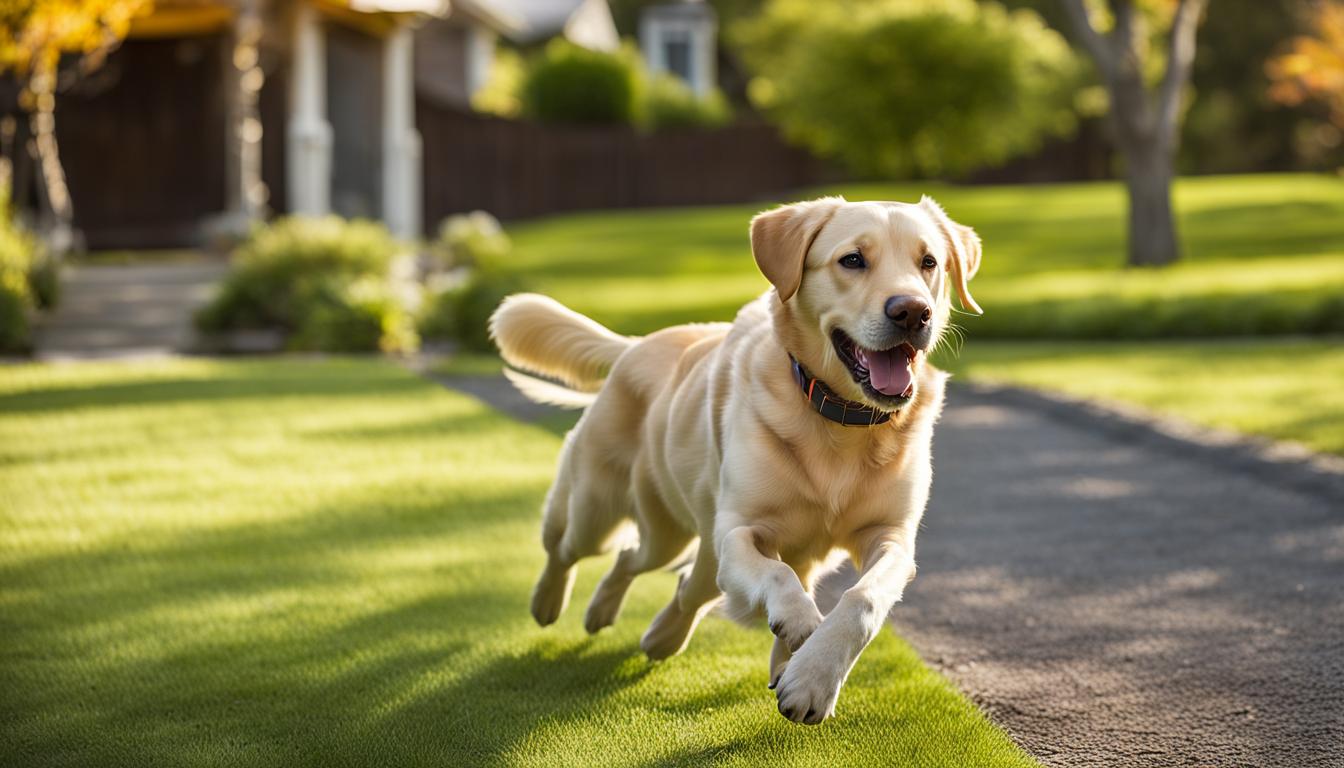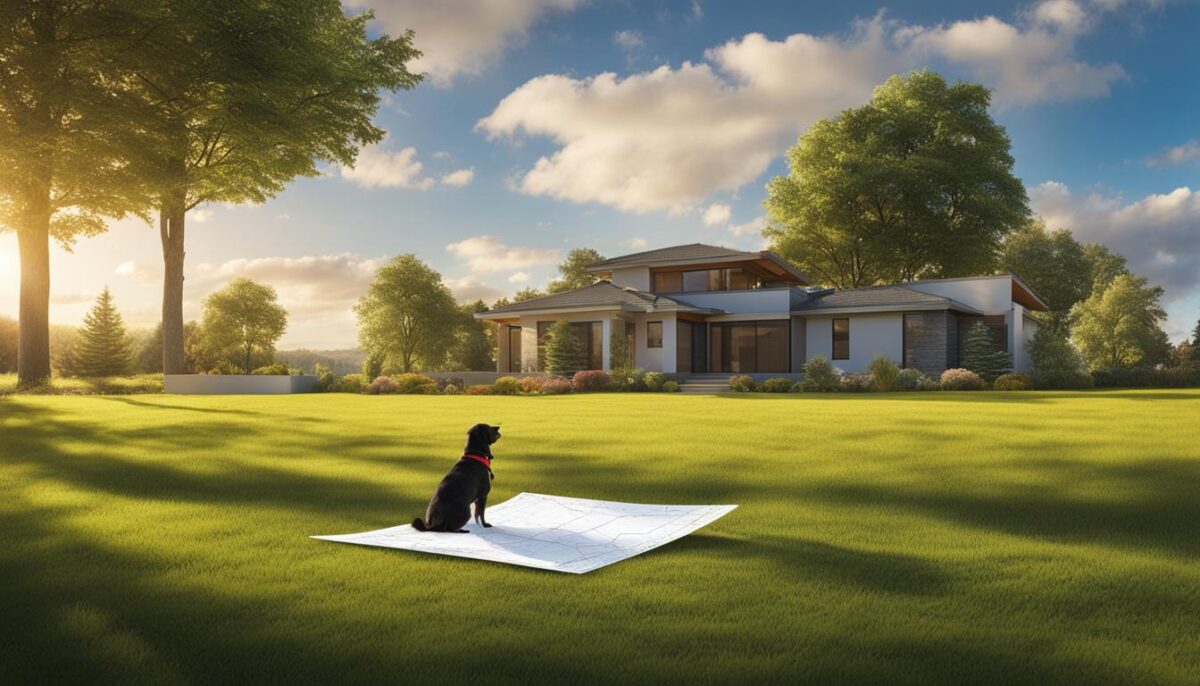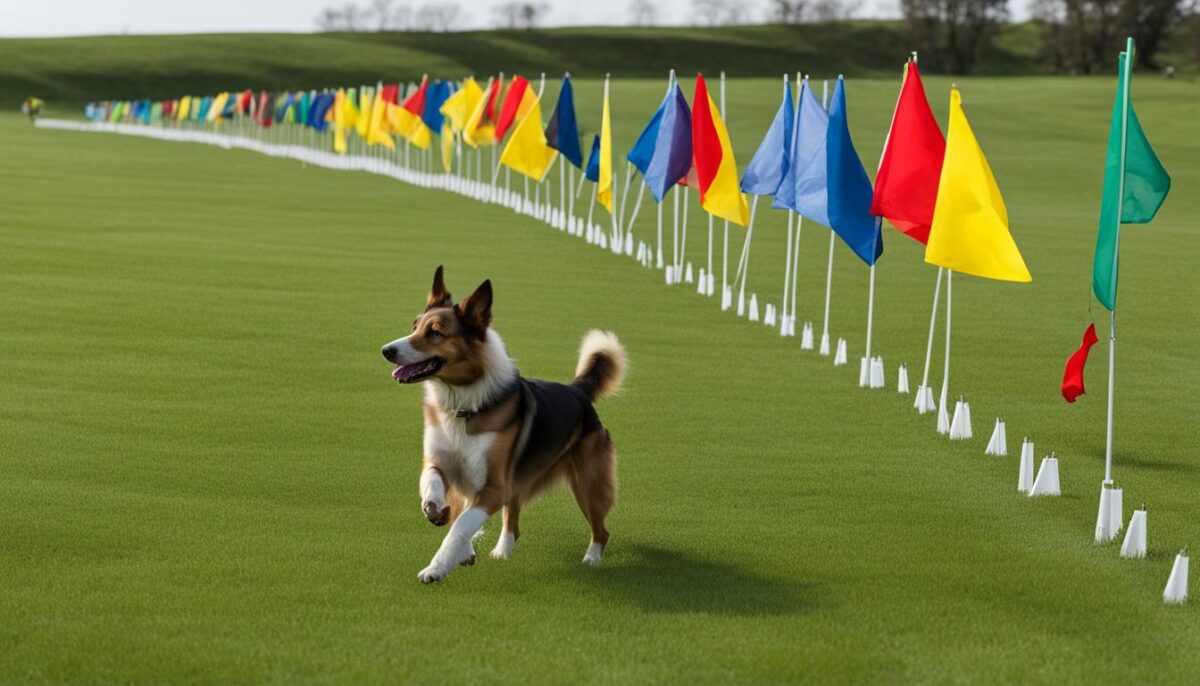Do you want to keep your furry friend safe in a pet-safe yard? Well, you can train a dog invisible fence to create dog safety boundaries. It’s like an invisible wall. They can’t see it, but it keeps them from wandering off. Think about how we stay away from places we know we shouldn’t go. It’s kind of like that for your dog, but with a special collar to help them learn.
When you have an invisible fence, it’s super important to show your dog where they can play. This way, they won’t chase after a ball and accidentally run too far. Training them with an invisible fence helps them have fun without going places they shouldn’t. And you won’t have to worry as much!
Key Takeaways
- An invisible fence helps your dog know where they can play.
- Training makes the fence work and keeps your dog from running off.
- Your friend will understand where they can go with a special collar.
- You can feel happy and safe about where your dog plays.
- With some patience, your dog can learn fast!
Understanding the Invisible Fence System
Have you ever seen a dog playing happily in a yard with no fence? They might be using an invisible fence system to stay safe. Let’s learn how it keeps your furry friend inside your yard.
What Is an Invisible Fence?
An invisible fence is like an unseen barrier that keeps your pup where it’s safe. There’s no wood or chain to see, but it works really well!
How Does the Invisible Fence Work?
Below the ground, there is a wire that goes all around your yard. When your dog wears a special radio collar, it beeps if they get too close to where the wire is buried. If your doggy keeps going, a signal stimulus correction will tell them that they’ve gone too far.
The Importance of a Warning Signal
It’s important that the collar beeps first as a warning. It’s like saying “Watch out!” before your dog reaches the edge of the yard. This lets them know they should stop or go back to the safe area.
The invisible fence system is smart because it teaches your dog where the safe area is without anything to climb over or dig under. With the beeping collar, they quickly learn where they can run and have fun without getting into trouble. Isn’t that cool?
Preparing for Invisible Fence Training
Getting your dog ready for invisible fence training is a big step towards having a happy, safe pet. Let’s ensure you have everything you need to start off on the right paw. A good invisible fence can keep your buddy close without the need for a regular fence that blocks your view or takes up space. But it’s not only about choosing the right fence, it’s also about training your dog with love and yummy treats.
Choosing the Right Invisible Fence
When you select invisible fence, think about your dog. Is your dog big or small? Young or old? Full of energy or more laid back? Your dog’s size, age, and how they act can tell you which fence will work best. Pick one that fits your yard and keeps your pet safe and sound.
Gathering Training Tools and Rewards
Next, gather the goodies and tools for training. Use little flags to show the no-go zones. These will help your dog see where not to go. Grab a special collar for walks that won’t mess with the fence’s signal. And don’t forget the training rewards! Treats and toys make learning fun and encourage your furry friend with positive reinforcement. Each time they do good, like coming back when called, give them a treat or some playtime. This way, your dog will learn that staying safe is awesome!
Introducing Your Dog to the Invisible Fence
Getting your dog used to their new invisible fence can be a fun adventure. It’s like teaching them to color inside the lines—it keeps them safe and gives you peace of mind. Let’s get started!
Using Visual Aids for Boundary Training
You’ll want to make your dog’s boundary training crystal clear. And what’s clearer than seeing something with your own eyes? That’s where training flags come into play. Place these flags around the edge of the invisible fence. They’ll act like little beacons, telling your dog, “this is as far as we go.” Over time, your pup will begin to understand where the invisible line is, even when the flags are gone.
Employing the Assistance of a Long Leash
Remember when you were learning to ride a bike and someone was there to catch you if you started to fall? The long leash guidance trick does the same for your dog. It lets them explore but also reminds them not to go too far. By holding onto the long leash, you can gently pull them back towards safety if they get too close to the edge. Not only does it help avoid any of those invisible fence zaps, but it also makes sure that boundary training is a positive experience for your precious pup.
Put these methods together, and you’ve got a winning combo for teaching your furry friend where they can and can’t go. Keep it fun, keep it consistent, and before you know it, your dog will be the master of their own safe little kingdom!
Step-by-Step Training Process
Train your dog can be like a fun game. Let’s learn how step by step.
Learning the Tone Warning
First, your doggie needs to learn about the tone warning. This sound tells them, “Hey, don’t go past here.” When they hear the beep, you guide them back with a leash. Then, you give them a treat or a hug. It’s like saying “Good job!” for staying safe.
Understanding Static Correction
If your furry friend keeps going past the beep, they might feel a small buzz. This is called static correction. It’s a tiny touch, like when you rub socks on the carpet. It just tells your dog, “Oops, you’ve gone too far.” Watch them closely to make sure they are okay and understand it means “stay inside.”
Incorporating Play and Positive Reinforcement
Playtime helps a lot! Playing games and giving them love makes training fun. This is called playtime reinforcement. It helps your pup feel happy and safe in their yard. Short, fun games with lots of cuddles and praise will help your dog learn faster and enjoy their play area.
Remember, training is all about being patient, kind, and having a good time with your dog!
Dealing with Distractions and Temptations
You’ve helped your best friend learn about the invisible fence. Now, it’s time to see how they do with distractions around. Imagine squirrels running by or the smell of a BBQ from next door. These are outside things that may make your dog forget the rules. Let’s make sure they stay safe by practicing more.
Testing Boundaries with External Distractions
At first, your doggy learned to listen for the beep and move back. Next, we will practice with more going on. It’s like when you try to do homework and there’s music playing. Can you stay focused? We’ll help your dog do just that. You can use toys, have people walk by, or play sounds. When they do the right thing and stay in the yard, give them a big “Good job!” and a treat. This will help them understand to stay in the yard, even when there’s fun to be had on the other side.
Reinforcing Training with Recall Exercises
Recall drills are games where you call your dog and they come running to you. This is another fun way to help them remember to stay safe inside their yard. Call them back to you, from different spots in the yard. When they come quickly, give them a pat and a yummy snack. This is a super way to keep them listening, even if a butterfly or a bike goes by.
- Start with little distractions.
- Use happy words and tasty treats.
- Try calling them from near the fence, then all around.
Take a look at how you can train each day with this easy chart:
| Day | Distraction Training | Recall Drills | Rewards |
|---|---|---|---|
| 1 | Wave a toy outside the boundary | Call from 5 feet away | Treats & Praise |
| 2 | Play a sound near the boundary | Call across the yard | Belly rubs & Snacks |
| 3 | Have a friend walk by the fence | Call when they can’t see you | Toys & “Good dog!” |
| 4 | Roll a ball outside the boundary | Call during playtime | Extra playtime & Treats |
| 5 | Bounce a ball by the boundary | Random recall drills | Big hugs & Yummy dinner |
When your furry friend does these without trouble, they are really learning! Keep practicing and soon they’ll know the yard is the place to stay and have fun.
Gradual Transition to Unleashed Supervision
Imagine your dog playing happily in the yard, with no leash holding them back. This is what we call unleashed yard freedom. It’s a big step in dog fence training, and it means your furry friend learned to stay inside the safe zone you’ve set. Now, you can watch them have fun and explore with more freedom.
When you see that your dog respects the invisible line, even without a leash, that’s a win! But keep an eye on them, and if they forget and cross the line, guide them back gently. You’re helping your buddy remember their playground limits—a key part of behavior reinforcement.
Let’s take away those little flags that mark the fence, but do it slowly. Maybe pull up one flag every few days. Keep doing this for a couple of weeks. We want to make sure our dogs really get where they can and can’t go before they are totally free to romp.
Remember, every dog learns at their own pace. Be patient and keep practicing, and soon your dog will know their boundaries like the back of their paw!
| Week | Action | Goal |
|---|---|---|
| 1 | Supervised off-leash time | Ensure dog understands boundary without leash |
| 1-2 | Remove a few flags daily | Gradually teach your dog the boundary by sight |
| 3 | Complete flag removal | Dog respects boundary with no visual aids required |
Doing this step by step makes sure your pal is safe and happy. And the best part? You’ll see them enjoying their unleashed yard freedom to the fullest!
Ensuring Continued Success and Safety with Invisible Fence Training
Keeping your pet safe is very important. If you’ve been training your dog with an invisible fence, you want to make sure that your furry friend keeps staying within their safe space. To maintain invisible fence training, you need to be patient and follow the same rules every day. This means always keeping an eye on your dog and making sure they understand where their yard ends.
It’s just like when you learn something new; you need to practice a lot to become really good at it, right? The same is true for your pooch and their fence training. The more your dog practices staying within the safe boundaries, the better they will get. But remember, it’s important to not rush and to take it slow. A happy dog is a safe dog, and we want to keep it that way for continued dog safety.
Sometimes, training can be tough, and that’s okay. If you are having trouble or if your dog forgets their training, you can always ask a training expert for help. They know lots of tricks to make sure your dog feels comfy and cozy inside their yard without getting scared or confused. That way, you and your best buddy can enjoy lots of playful, sunny days together, worry-free!
FAQ
How can I safely train a dog with an invisible fence?
Begin by choosing the right system for your pet, considering their breed, size, age, and temperament. Use visual aids like flags and a long leash to help with boundary training and be consistent with rewards for positive behavior. Gradually introduce distractions and work up to off-leash supervision, always reinforcing the boundary limits.
What is an invisible fence and how does it help create a pet-safe yard?
An invisible fence is a system that creates an unseen boundary for your dog through a radio collar and underground wire or central transmitter. It helps keep dogs safely contained within your property without the need for traditional fencing, which might not always be feasible.
What should I consider when selecting an invisible fence for my dog?
Select an invisible fence that’s suitable for your dog’s specific needs, including their breed and temperament. Make sure the system has a warning signal, and consider the size and layout of your property when determining the appropriate invisible fence to ensure dog safety boundaries.
How do invisible fences work and what is the role of the warning signal?
The invisible fence works by transmitting a signal from an underground wire or a central transmitter to a radio collar worn by your dog. The collar emits a warning beep as the dog approaches the set boundary, followed by a safe static correction if they continue. The warning signal is important as it gives your dog a chance to retreat, avoiding the need for correction.
What are the first steps in starting invisible fence training?
The first steps include selecting the appropriate invisible fence system for your dog, setting up the boundary, and marking it with flags for visual cues. You’ll also need to gather training tools and decide on rewards for positive reinforcement during the process.
Why are visual aids and a long leash important during boundary training?
Visual aids like flags can show your dog where the boundary is, while a long leash allows you to control and gently guide them back to the safe zone if they get too close to the boundary. This minimizes the chances of receiving static correction and helps your pet to learn with clarity.
How do I teach my dog about the tone warning and static correction?
Start with creating a positive association with the warning tone by leading your dog back to the safe zone and rewarding them when they retreat after hearing it. Introduce the static correction slowly and ensure your dog understands it as a deterrent to crossing the boundary.
What is the best way to deal with distractions during invisible fence training?
Introduce distractions gradually while your dog is on the leash, continuing to reinforce the boundary with rewards for ignoring temptations. Practice recall drills and provide plenty of praise and treats for obeying the boundaries despite distractions.
How do I transition my dog to unleashed supervision within the safe zone?
After your dog is consistently responding to the warning and correction, allow them more freedom within the safe zone without the leash. Monitor their behavior closely and intervene by leading them back to the safe zone verbally and physically if necessary, emphasizing the boundary without using static correction.
How can I ensure continued success with the invisible fence training for my dog?
Ongoing success with an invisible fence involves regular reinforcement of the boundaries, occasional retraining sessions if needed, and paying attention to your dog’s response to the system. Keep an eye out for potential issues or confusion and address them quickly to maintain your dog’s understanding and compliance with the invisible fence.


